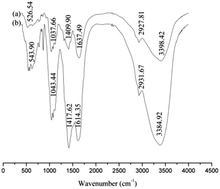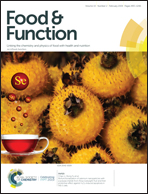Inhibitory effect of Athelia rolfsii exopolysaccharides on organ damage in lead-exposed Kunming strain mice
Abstract
Herein, Athelia rolfsii exopolysaccharides (AEPS) were used to alleviate organ damage in lead-exposed mice. Analysis of the body weight growth rate and visceral index revealed that AEPS maintained the normal body weight growth rates in lead-exposed mice. Biochemical indicators (T-SOD, CAT, MDA) in serum revealed that AEPS increased the activity of T-SOD in the serum of lead-exposed mice. The lead concentrations in the brain, liver, kidneys, testis and faeces were measured by flame atomic absorption. The percent reductions in lead accumulation in these organs were 76.65% (brain), 60.42% (liver), 78.43% (kidneys) and 56.47% (testis). The data suggest that a significant portion of the lead was expelled in the faeces. The results proved that AEPS prevented lead accumulation in the organs of lead-exposed mice. A histological evaluation of the brain, liver, kidneys and testis also revealed that AEPS significantly alleviated liver and kidney damage caused by lead poisoning and protected neurons and sperm cells. We hypothesize that the ingested AEPS chelated the lead in the digestive system of the mice, leading to excretion through the faeces. Thus, AEPS represent a promising method of detoxification following lead poisoning.



 Please wait while we load your content...
Please wait while we load your content...